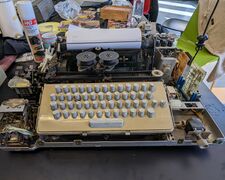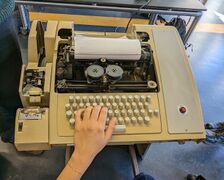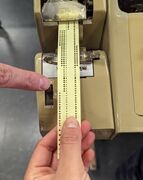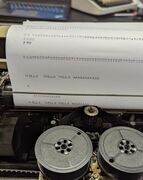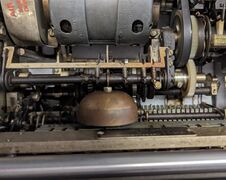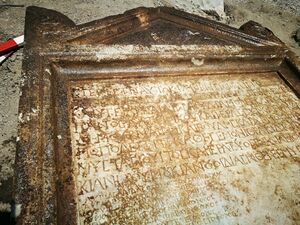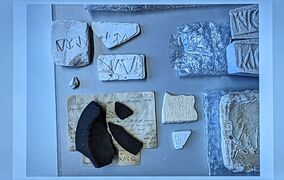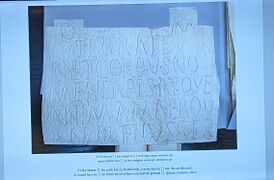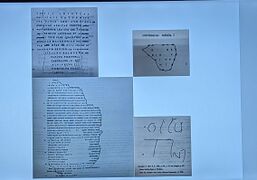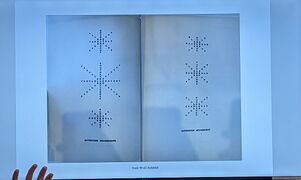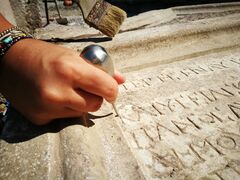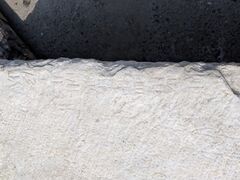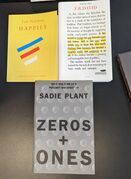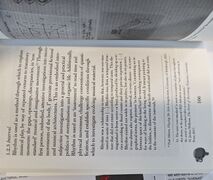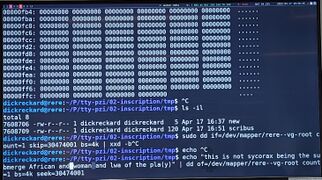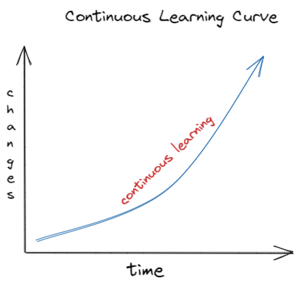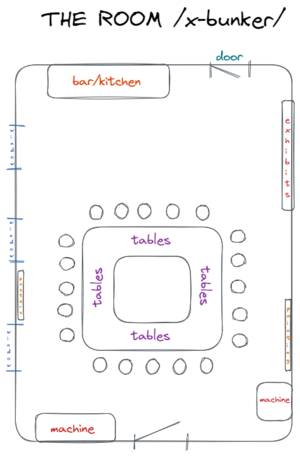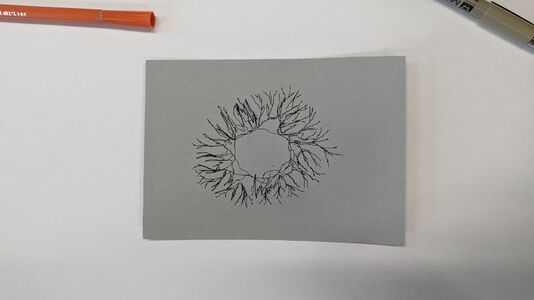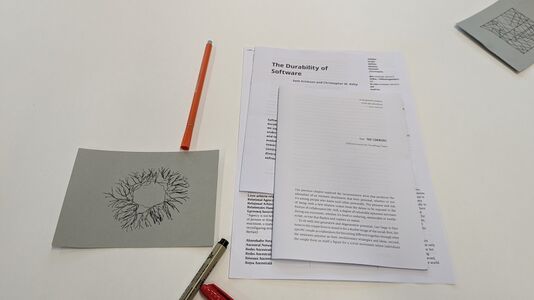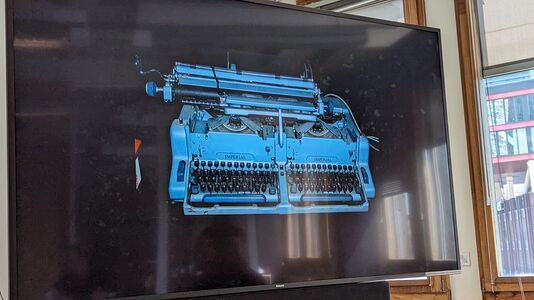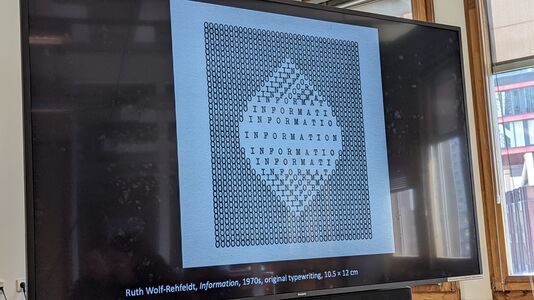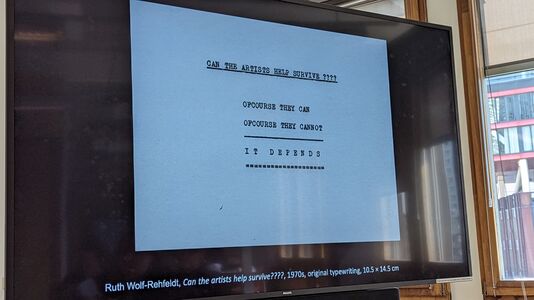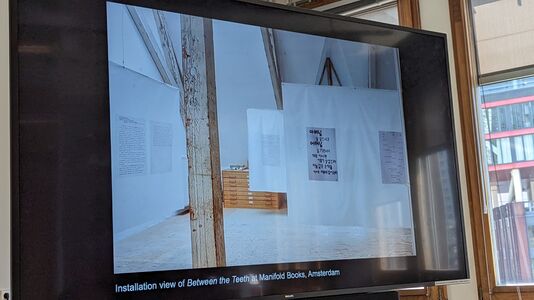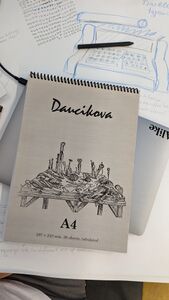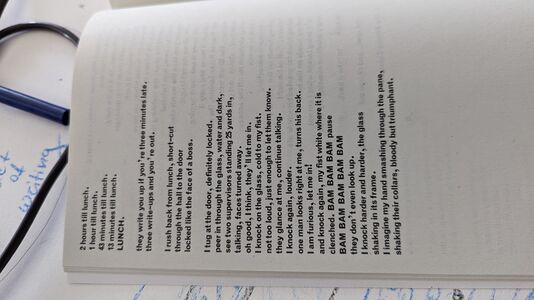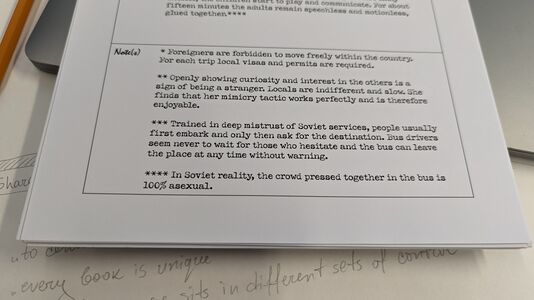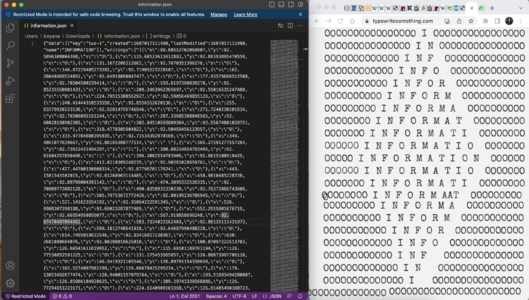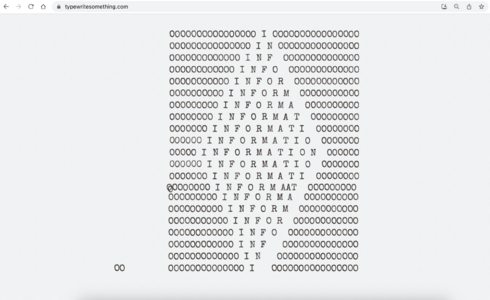User:Bnstlv/specialissue-21
Kick-off: TTY (Working Title)
Special Issue 21 will be in collaboration with Martino (SI21 guest editor) and 7+ artists and publishers (aka guest contributors). I'm very excited about what's planned for this trimester and looking forward to meeting all of our guests and publishing things on a weekly basis together.
In our first session, we talked with Martino about the history and different use cases of teletype machines, why TTY is interesting, and what's inside. Martino also mentioned some of his previous work, collective projects at Constant, BXL and more. We also discussed the format of the SI21, an ongoing publishing arrangement, to be released every week. It's called Blob for now. To finish off the first day of the new trimester, we read a piece by Lori Emerson Six (Difficult and Inconvenient) Values to Reclaim the Future with Old Media.
Here are a few shots of TTY:
Authors mentioned during class:
Week2: Andrea di Serego Alighieri and Martino
Morning | What is our relationship with writing? + Discourse on inscription
During this session, each one of us shared our personal relationship with writing, discussing the differences between writing in our native language and writing in English. Andrea then opened the discussion by explaining his approach to writing, talked about the definition of 'inscription', and looked at examples of writing (and word formatting) by various authors.
This made me think of the stella (archaeology, a big piece of stone with an inscription) we found in the Basilica in Plovdiv back in 2019 and the inscribed names on the stone.
An inscription is always meant to be read, it is not present, and it has to be deciphered. Inscriptions involve the use of tools, the body, and the hand.
Not sure if I understood it correctly, but I found it very interesting what Andrea said about how some scientists believe that due to the lack of spacing in some inscriptions, it was necessary for someone to read the text out loud, i.e. reading body and verbal reading.
We also discussed the form of ancient texts and how they are documented and studied by archaeologists and epigraphists. Andrea also referred to Emily Dickinson's pocket letters.
We then looked at examples of how to give rhythm to a text, including Norman Henry Pritchard, Lyn Hejinian (in her poetry she plays with spacing lines in alphabetical order), Karen Brodine (and her book 'Woman Sitting at the Machine Thinking'), Alice Notley, and Hannah Weiner.
Andrea also mentioned Kamau Brathwaite, with reference to the three major crises he faced in his life:
- destroyed Barbados (losing memory = lost his hard drive) - lost his wife (she had a computer, and she initially started inscribing his work) - people entered his home to rob him, put a gun to his head and pulled the trigger. However, the bullet didn't shoot, but Kamau said he basically "died" at this very moment.
One thing that I find interesting was when Andrea explained something about the challenges of using Caribbean language in Shakespeare's work (see Sycorax): "There's no way for him (Shakespeare) to use Caribbean when working on the Tempest because the language itself has to be experienced through listening, it just works differently."
I recorded a short audio of the audio recording we listened to of Kamau reading text aloud to prove the idea of authentic Caribbean inscription. (again, it is possible that I haven't understood fully what has been said in class).
Martino continued the conversation and made a few references to historical materialism, materialism in media, and materialism in Marxism, including the base-superstructure model we covered with Steve last trimester.
We also explored the notion that writing has become more fundamental than language itself, given that we are all now 'alphabetised'.
Afternoon | Writing, Revisions and Fixing breadcube
Andrea and Martino suggested doing a writing exercise. First, we had to select a page from the books A & M brought, and then edit we had to write (or rewrite) using the space between/above/below the lines. I chose to work with a quote by Helmut Kopetsky (whose work is centred around radio documentaries). Limit: compose at least 6 new sentences/lines.
I completely misunderstood the task and instead on the piece of paper I printed out, I started working directly on my wiki... I created a page, Why Radio? by Helmut Kopetsky (Berlin, Germany), and decided to do a phonetic transcription of the quote from Bulgarian to English and then I translated the piece into English. It felt right to try to 'phonetise' the text. In it, Kopetsky talks passionately about why he is doing radio, why this medium, and why matters to him. Irmak volunteered :) to be the one who reads the phonetically transcribed version and she managed to read the text really well. For sure, it sounded like non-native Bulgarian speaker, however, I was able to understand the whole piece perfectly.
This made me think how the phonetic translations of a piece of text could also serve as "encoding" the message to some extent, and only after reading it aloud, you're able to "decode" it. However, the comprehension of the message itself is only possible if the listeners can understand the language in which the text was read. One dark scenario tho, would be someone to make a phonetic transcription of a text, for example talking about global peace, and present the translated version of it which talks about global war. (Could Putin's nearly two-hour long address on Feb 21, 2022 be seen like such example?) The ability to understand something that has been said or written is a complex matter, because it is so personal. In my opinion, in mass media (tv, social media, etc.) the effects of miss- and disinformation are possible due to the rapid deployment of these "extremes", between what was inscribed and what was understood. The interesting thing here is that the narrower of the wider the gap is, it doesn't matter. It serves the same purpose, amplifying the same effect. Finding 'balance' or 'reading between the lines' seems to me to be the remedy for these bended realities. Language starts to look even more like a weapon. (referring back to Martino's line above about how fundamental writing has become as we are all now 'alphabetised')
Finally, we ended the day with Martino showing us how to do direct inscription on a hard drive (breadcube).
Some more photos of today:
Week3: Roel Roscam Abbing and Martino
Pad: SI21, session: 3
Pad 2, made by Cara, full version
Morning | The LEGACIES that are found layered in contemporary devices and networks
STS, Science and Technology Studies emerged from the confluence of a variety of disciplines and disciplinary subfields: sociology, anthropology; disciplines from humanities that turn their glance at technology and computing. It takes the perspective of the social construction of science and technology; the relationship between machines and humans.
- DIY Glossary
STANDARD = etymology; to standard units of measurement; normative connotation (how things should be perceived); "IMPERIAL" - all units of measurement need to be unified in a large-scale context of the world becoming a prominent place (territory). In modern times, the UK still uses "imperial unit". STANDARDISATION (ISO, International Standard Organisation) - the process of standardisation is a matter of political negotiation. One country's standard becomes 'dominant', i.e. has a competitive advantage over other countries. (examples: times (like GMT (Greenwich Mean Time) time zone is 0), currencies, degrees (Celsius or Fahrenheit), weight (kg vs pounds), distance (km vs miles), and more. INTEROPERABILITY - zooming in on the computational aspect of networks, how different standards will be able to emerge into larger standards that will go in different directions and urgencies. TTY, the urgency of using standards to make machines compatible? intra-operable. Desire to make networks compatible; the process of negotiation between market share and making it compatible with others so as to profit more from it. You never start from a clean state, historical infrastructures are intertwined. INSTALLED BASE (Susan Leigh-Star, 1999) LEGACY - comes from the computer world; weight that you need to work with because of history, and the previous decision that has been made; you are stuck with the previous person who worked on it and what has been done already. Legacy is seen as something that holds the 'break thing, move fast' notion, holding innovation back. 'Working with legacies' has a negative connotation, but the whole world is built on legacy stuff, countries and organisations are using computers in their workflow and decided to spend more on these systems and infrastructures because they have the money and culture, in comparison to poorer countries where investments of such scale aren't possible.
Stephen: What is the difference between the 'structure" and 'infrastructure'? 'Infra' also means underlying, together with interconnected. One structure contains another (economic structure (money) and shipping, a trade structure that carries cargo and goods).
- Reading "Open Standards" by Andrew Russell
Open Standards and the Digital Age: History, Ideology, and Networks
Lunch break & SI21's first release
During the lunch break, we released our first sub-issue of SI21. Check out the Briki wiki page for more information.
Afternoon: On Binary and Unicode
- 1111 1111 = 255 = FF
Or, reading different representations of the same numbers
Binary Using 0 and 1
Known as a base 2 system, because we can express two values before we "add" another number.
a zero is written as: 0 a one is written as: 1 a two is written as: 10 a three is written as: 11 a four is written as: 100 a five is written as: 101 a six is written as: 110 a seven is written as: 111 an eight is written as: 1000
Encoding Exercise on Numerology, on breadcube
- ASCII, an 'imperial" legacy
ANSI, American National Standards Institute developed the A.S.C.I.I. (abbreviated from American Standard Code for Information Interchange, which is a character encoding standard for electronic communication. ASCII codes represent text in computers, telecommunications equipment, and other devices.)
Encoding Exercise on AASCII, on breadcube
- Inter PunyCode
Punycode is a representation of Unicode with the limited ASCII character subset used for Internet hostnames. Using Punycode, host names containing Unicode characters are transcoded to a subset of ASCII consisting of letters, digits, and hyphens, which is called the letter–digit–hyphen (LDH) subset. For example, München (the German name for Munich) is encoded as Mnchen-3ya.
- Unicode - The World Standard for Text and Emoji
Unicode is a character encoding standard. Official website Members of Unicode Org
Originally meaning pictograph, the word emoji comes from Japanese e (絵, 'picture') + moji (文字, 'character'). In 1998, the emoji was born. Shigetaka Kurita created the first 180 emoji collection for a Japanese mobile web platform, and the concept spread from there. From then on, many phone and software producers (like Apple, Google, Samsung and Microsoft) started looking at ways to adapt these new characters to already existing ones (like the dollar sign and so on).
Encoding Exercise on Unicode, on breadacube
Martino and Roel showed us the YAT platform lol! BE AN ICON. Your Yat is your universal emoji username, website URL, payment address, and more.
References:
- Binary number
- Dvorak Keyboard
- Arabic chat alphabet or Arabizi
- Backward Compatibility
- Unicode Input
- Han ideographs
- серафими многоꙮ҄читїи҄
Week4: Houweling Telecom Museum
Morning Pad:
Afternoon Pad:
May 9, 2023 | Houweling Telecom Museum
Before the tour, 10:30
The museum was founded 60 years ago. Everyone who helps the place keep on running is a volunteer. The majority (all of them?) have been working for PTT and/or KPN for almost their entire life.
PTT (according to Wikipedia): The PTT, the State Company of the Post, Telegraph and Telephony (until 1928 known as the State Company of the Post and Telegraph), was the Dutch state company responsible for the post, telegraphy, telephony and radiotelephony, Scheveningen Radio, the Wire Broadcasting, the Radio control service, the Broadcasting Contribution Service and the wire and radio links for radio and television in the Netherlands.
KPN (according to their website): KPN is a Dutch landline and mobile telecommunications company. KPN originated from a government-run postal, telegraph and telephone service and is based in Rotterdam, Netherlands.
With the advent of microprocessors everything in the filed speeded up dramatically. Especially the changes in the last decade. Technology development is moving too fast and it is hard to keep up.
All changes in the recent years => continuous learning
Around 2000s an important shift happened - the transition from copper to fiberglass cables? "The high speed that comes with fiberglass cables is of importance for the gaming community, however, no one else needs that much speed. It can reach up to 940 Megabits per second (Mbps), or 70-80%? of the speed of light."
"The fiber backbone is still owned by KPN nowadays."
Of course they have plenty of teletype machines in the museum (haha this question made them laugh, it was nice :)
What's the plan for today:
- visit the exhibition - go back to the room to discuss if we have more questions
The atmosphere:
- several tables arranged in a square with everyone sitting around it (like a round table seating) - vases with flowers on the tables, coffee, tea, speculaas! <3 - all 7 volunteers are Dutchmen in/around retirement age (except two younger men) - several posters made out of prepaid phone cards - posters with vans, black and white sketches - a big painting on the wall facing the windows - small bar and a kitchen corner with lots of different beverages - a few old telephone exhibits - a showcase with lots of other exhibits - feels homy, very cozy and calm
The space where we met was once a bunker built by the Germans in WW2.
Appliances and equipment are also donated to the museum from time to time. During the corona outbreak a lot of people brought items in banana boxes. :)
They have everything there! Systems operated manually, others semi- or full-automated? Exhibits corners from Ericsson, Siemens, Philips. Devices that haven't been used in a long time, a fax machine, telexes, measuring equipment and telephone books from 20th century.
Leica model 4-2 post (very rare camera, can't find it on the internet, check out the photo on breadbrick/wek3) - it's an emblematic camera model used to photograph the counters? photos provided higher accuracy, helped avoiding the mistakes (errors) that used to occur due to the manual labour of humans who worked in the telephone centers.
______________
After the tour, 13:30
Why it is important? (Martino)
- "pure history" - to help younger generations understand how things used to work in the past, where and when all began, give context, narrowing the knowledge gap? - children are especially intrigued by the telex machine <3 - the museum is slowly dying - continuity is a big challenge, there is not enough young people interested in (or having the time to) volunteering. however, few could actually learn all the details, processes, and reach the depth of knowledge that the people running the museum possess.
Accessibility issues because of the building, it's very old, no ramps, no elevators, tiny corridors, not enough space for wheelchairs.
No written information, no tangible trace in a sense that everything we discovered about this place, and our past, is due to the volunteers who tell us the history and show us around. In my mind, people are the actual heritage there (speaking in the context of museums as spaces of preservation of cultural heritage), and not the machines. yes, machines and systems are a big part of it, but without the people's knowledge and experiences, the many stories behind the machines, they are just objects, metal constructions of wires and wood, making nose and having odd smell.
- who is the reader of such publication? - what will happen if we look at the machines as a format (hard copy) and human speech as the actual letters inscribed on the pages of that same hard copy? what's lost when letters start disappearing slowly, bit by bit?
The motivation behind creating and running the museum lies in their desire to share their life as employees, the amount of labour that went into creating and developing this industry. it was a big part of their lives and it still is.
Their hope is for the people who visit the museum to continue their work by telling others about what they've had heard and saw there.
Many people working in Ericsson visit the museum to see some of the exhibits and learn about the company and one of its systems used back in the days.
They handed us a leaflet about the museum (in Dutch) as a gift. <3
Week5: Femke Snelting and Martino
Morning | SI21 sub-release: Encoding Converter and the Cloud We had an intense start to the day with a morning full of interesting talks around networks, virtual machines, software making as hardware and more. Femke invited us to introduce ourselves by pulling a card from the deck she brought and sharing our thoughts about it. My card resembles something like a neuron. It also reminded me of a cross-section of a stem of a tree with branches going off the stem.
Afternoon | The Cloud, IaaS, SaaS Sadly, I had to miss the rest of the class but I did read the texts Femke shared with us. Somewhat difficult to read but also raised many questions. The language is so violent and on the edge at times and it does seem like implying a specific narrative. In its approach, I find it similar to the one used during the socialist realism period in literature (and media production as a whole).
Aglaia, Irmak and I were 'publishers" this week so we gathered all our ideas in one pad. We need to discuss some of them with Joak and Manetta and decide which one we are going for. All are very interesting and fertile in my opinion.
Further readings on abstraction:
- Abstraction_(computer_science)
- Abstract (art)
- Polymorphism_(computer_science)
- Object-oriented_programming (OOP)
Week6: Isabelle Sully and Martino
Morning | Isabelle Sully and the impact of informatics on the workforce
Afternoon | The Phantom of the Operator and Parallel Reading
I read and annotate The Automation Charade by Astra Taylor.
New terms: Taylorism Ghost work Ghost restaurants or kitchens
Ada also mentioned a documentary on Netflix, Working: What We Do All Day hosted by US President Obama.
Inspired by the documentary movie we watched during class, Aglaia, Ada and I started considering how a website goes on strike. The 'WIKI IS ON STRIKE' idea came after a fun conversation we had several weeks ago. We talked about the nature of the strike is; what is happening during striking actions, labour, and the invisible labour some perform even today. As a result of answering some questions, we decided that it would be relevant and impactful if we can find a way to make the wiki stop working the way it used to or the way everyone with access to the XPUB & LBM Wiki is used to experiencing it. We wanted to occupy the wiki temporarily, i.e. to go on a strike, possibly by making all the links lead to the SI21's page, or link to a Manifesto. The concept was good, but the timing wasn't, especially considering the coming assessment weeks for XPUB and LBM. So instead of interrupting how people use the wiki on a daily basis, Aglaia and I decided to take a different approach. Eventually, we found a new way to execute the idea and make the invisible visible.
Here's the website we made: https://issue.xpub.nl/21/strike/
P.S. During the execution process, while trying to re-type a work by Ruth Wolf-Rehfeldt (Information, 1970), I stumbled upon a fun web tool, a website that recreates the typing on a real typewriter. It was interesting to play with the web interface and compare the two processes. Plus, another nice thing about it was that you can export your writings as .jason files: typewritesomething.com and take the experiments even further.
OOOOOOOOOOOOOOOOOOOOOOOOOOOOOOOOOOOOO
OOOOOOOOOOOOOOOOO I OOOOOOOOOOOOOOOOO
OOOOOOOOOOOOOOOO I N OOOOOOOOOOOOOOOO
OOOOOOOOOOOOOOO I N F OOOOOOOOOOOOOOO
OOOOOOOOOOOOOO I N F O OOOOOOOOOOOOOO
OOOOOOOOOOOOO I N F O R OOOOOOOOOOOOO
OOOOOOOOOOOO I N F O R M OOOOOOOOOOOO
OOOOOOOOOOO I N F O R M A OOOOOOOOOOO
OOOOOOOOOO I N F O R M A T OOOOOOOOOO
OOOOOOOOO I N F O R M A T I OOOOOOOOO
OOOOOOOO I N F O R M A T I O OOOOOOO
OOOOOOO I N F O R M A T I O N OOOOOOO
Week7: Zoumana Meïté and Martino
Zoumana Meïté is a performer and theatre-maker based in Strasbourg with a practice in artistic research, dramaturgy and improvisation. He concluded the post-master programme in a.pass, advanced performance and scenography studies. He is currently working with Entrées de jeu, a theatre-forum company in Paris and he is in the process of starting his own dramatic experimentation project.
Working with memory and space. Scenography. Improvisation and computing.
Week8: Jara Rocha and Martino
Jara Rocha
Notes and Collective writing
Things we discussed:
- Logic gates - Logic gates, XNOR, AND, OR, BUT, NOR
- Images about XNOR truth table
- Images about Redundant Backup System
- Curclusion
Week10: Further bricking
- Pad of the daay - working on the gesture glossary
SI21 website and sub-releases
- SI21 website
- Encoding converter - The table below is a look behind-the-scenes at what really happens when you type
- Strike - Wiki goes on strike!
- Gesture Glossary - The aim is to see if a gesture glossary works and how it will work best.
- Overlap - OVERLAP WAS PRODUCED IN JUNE 2023 AS PART OF TTY, SPECIAL ISSUE 21

